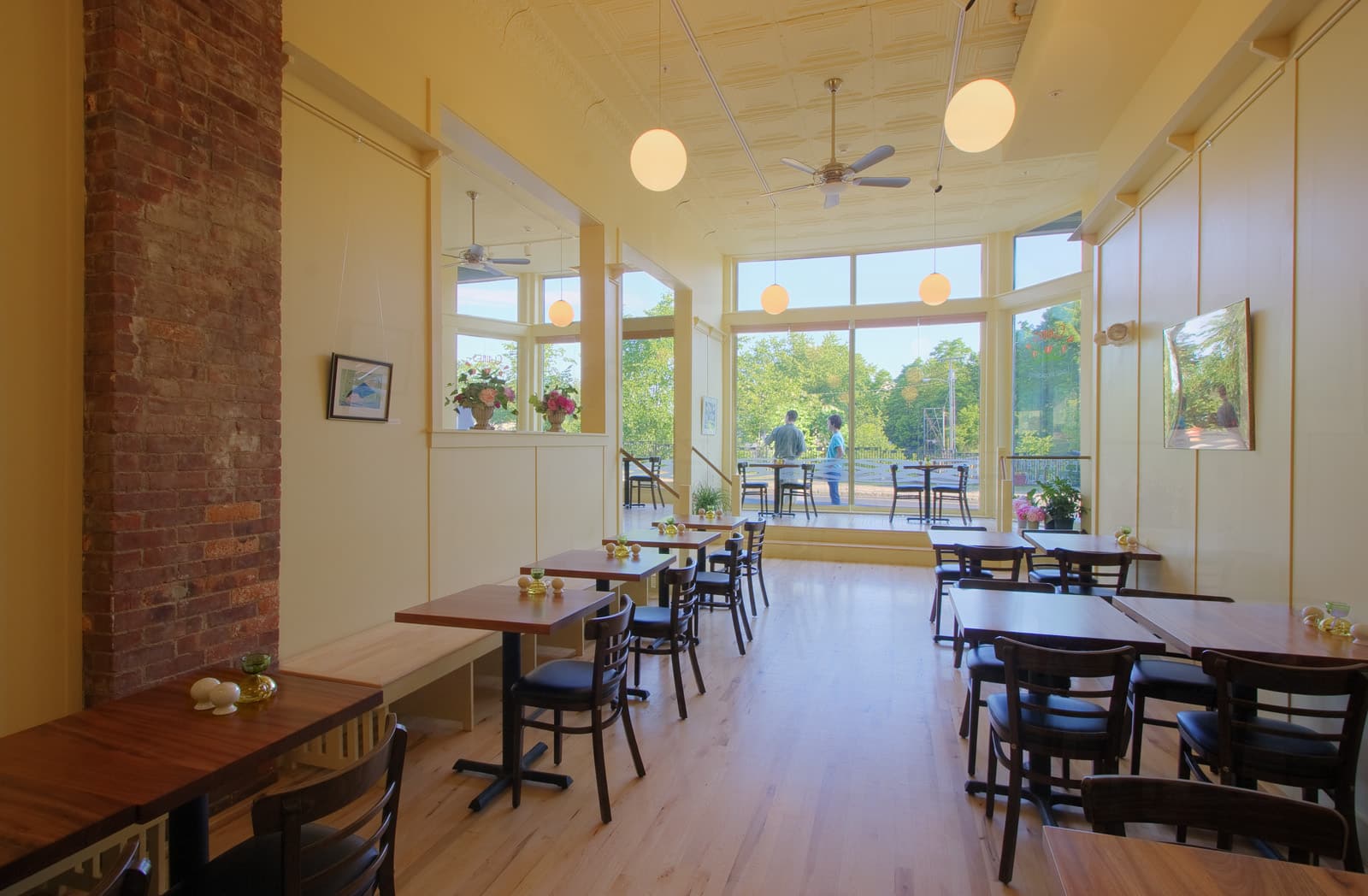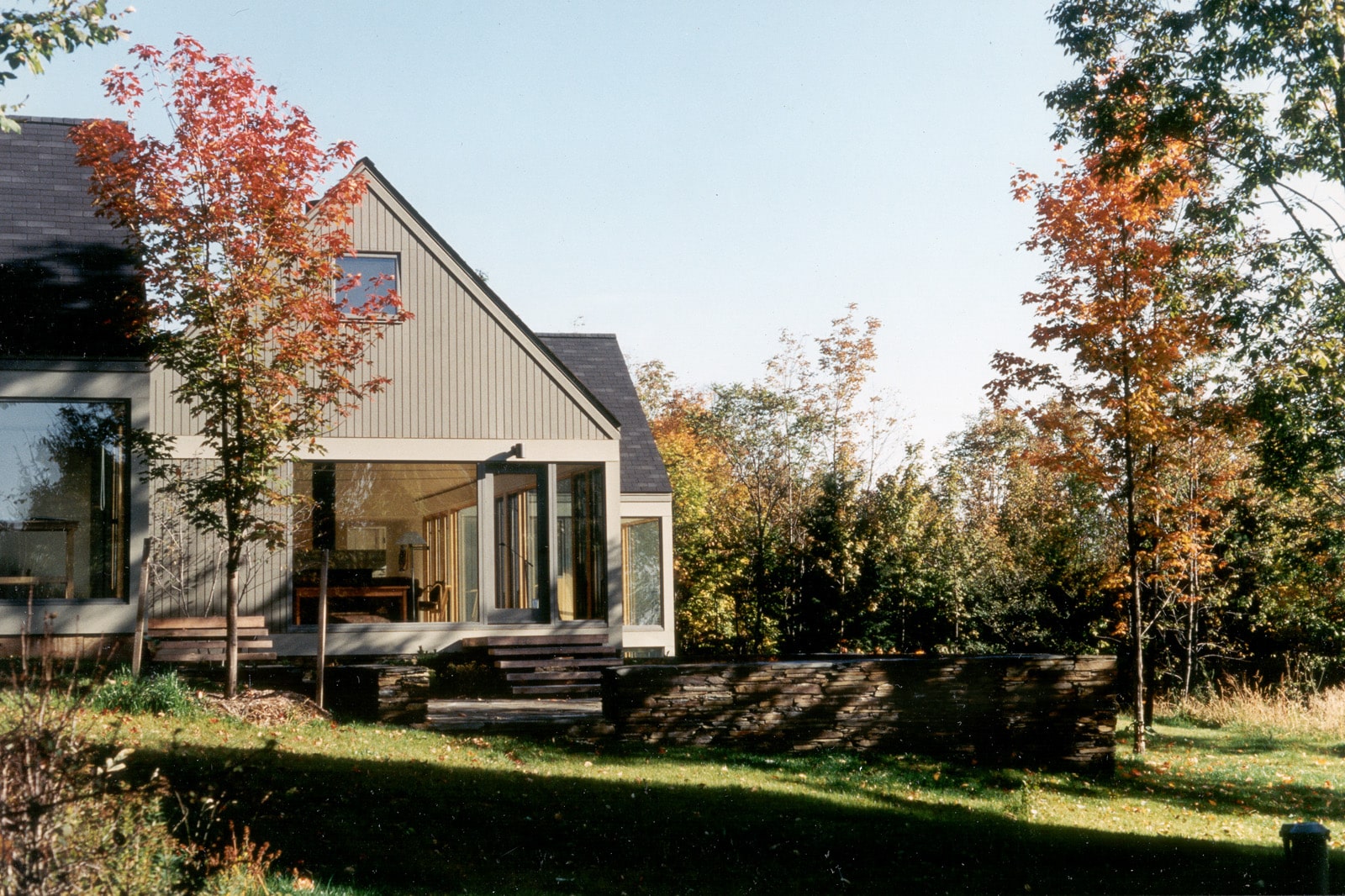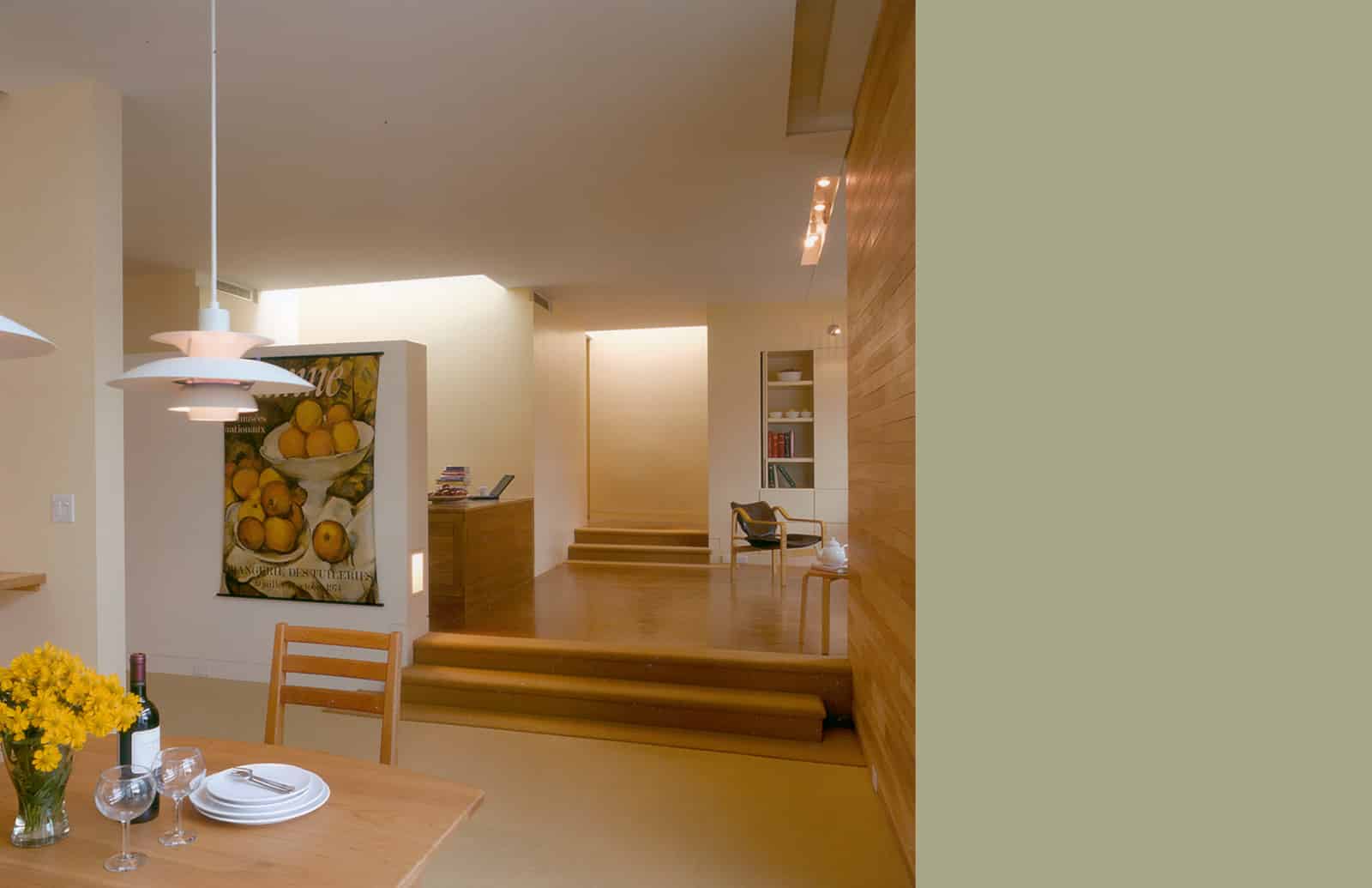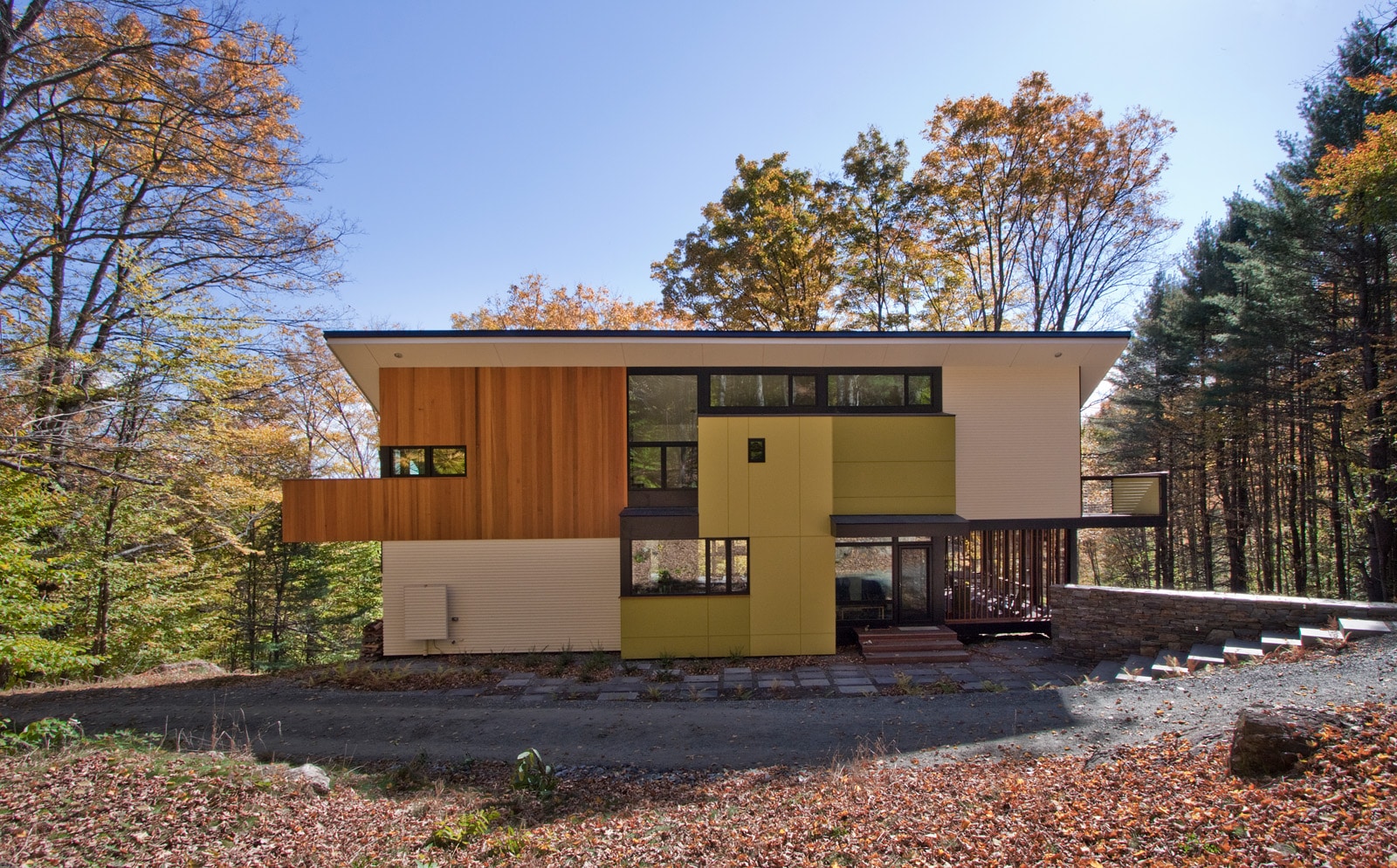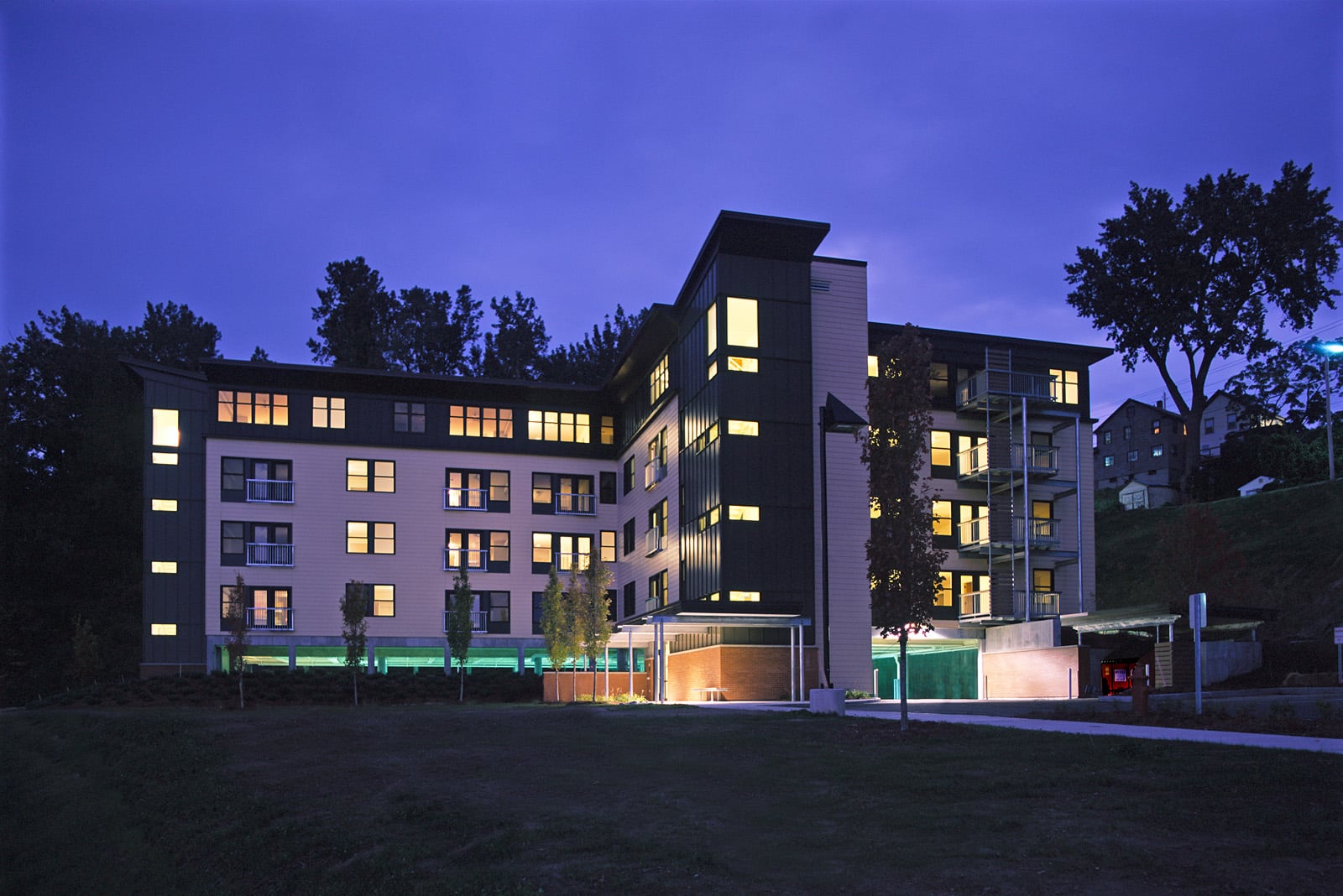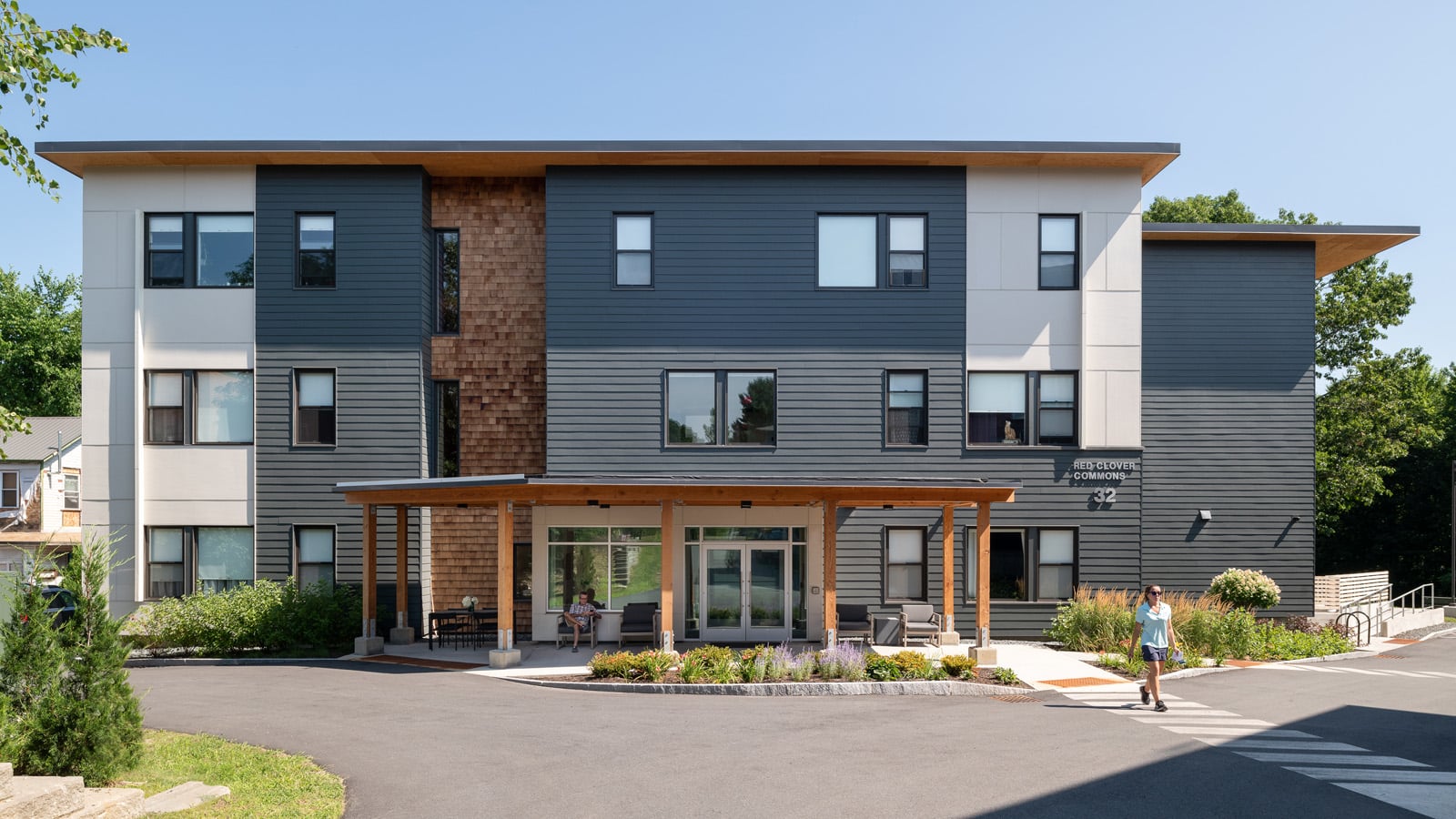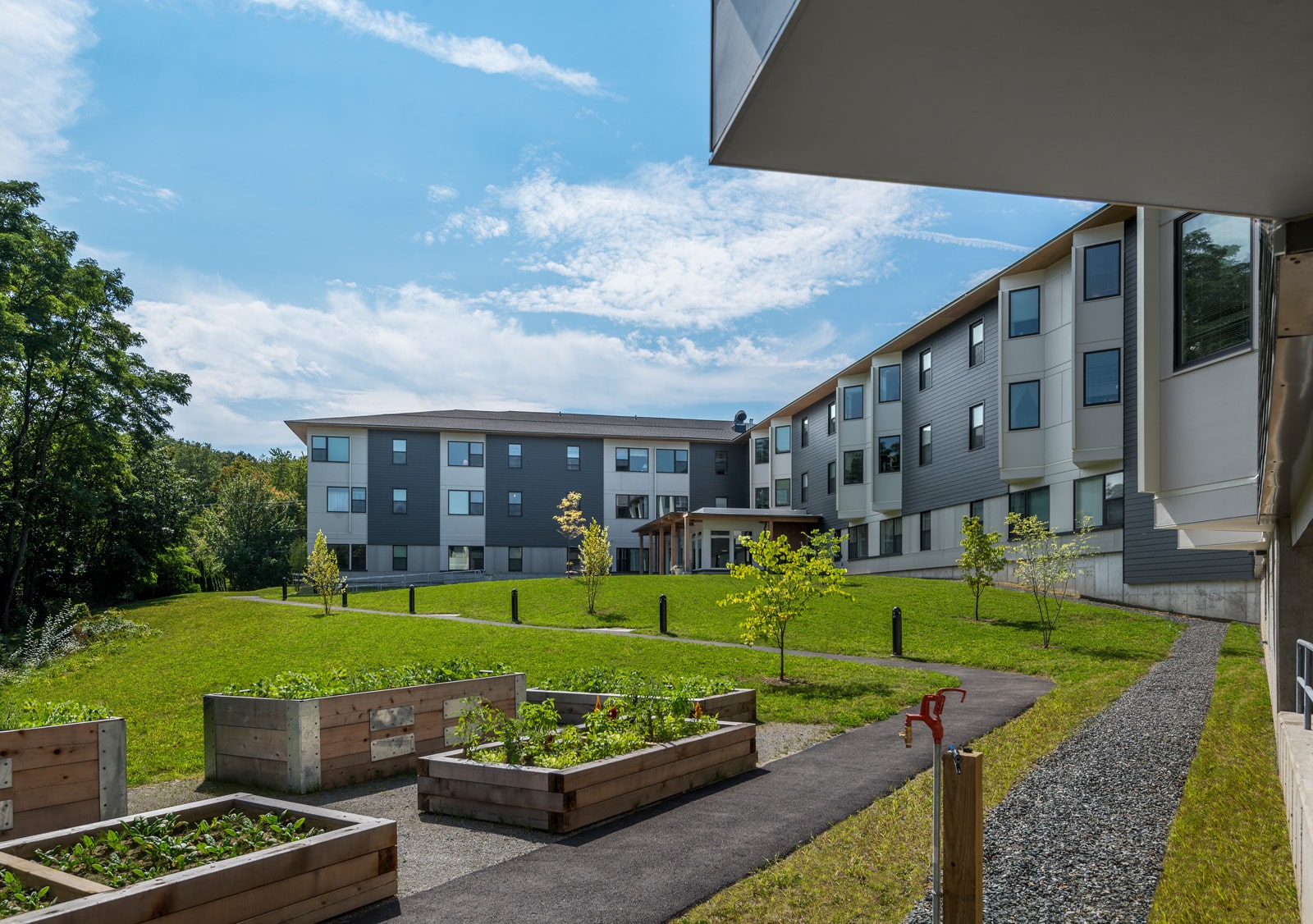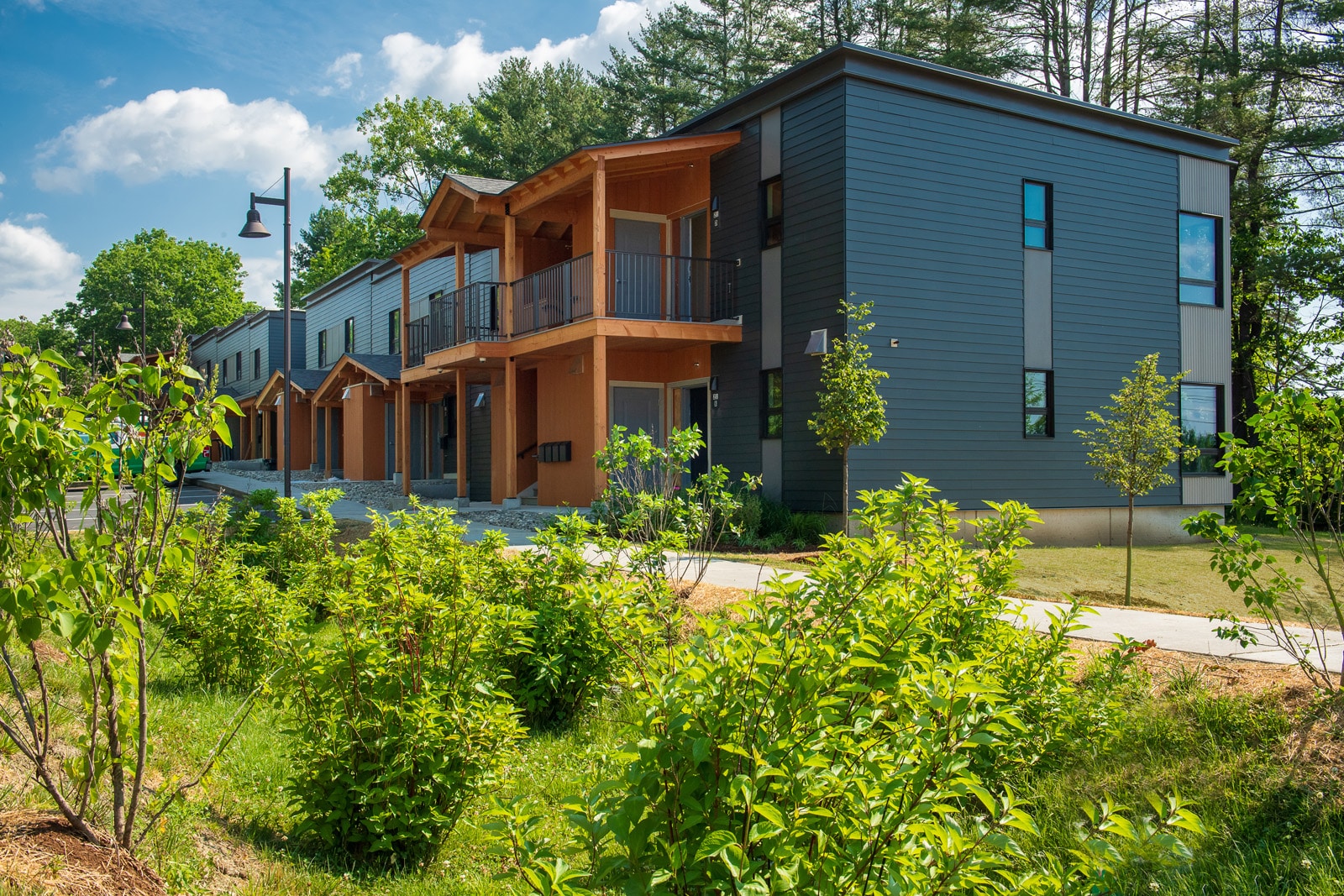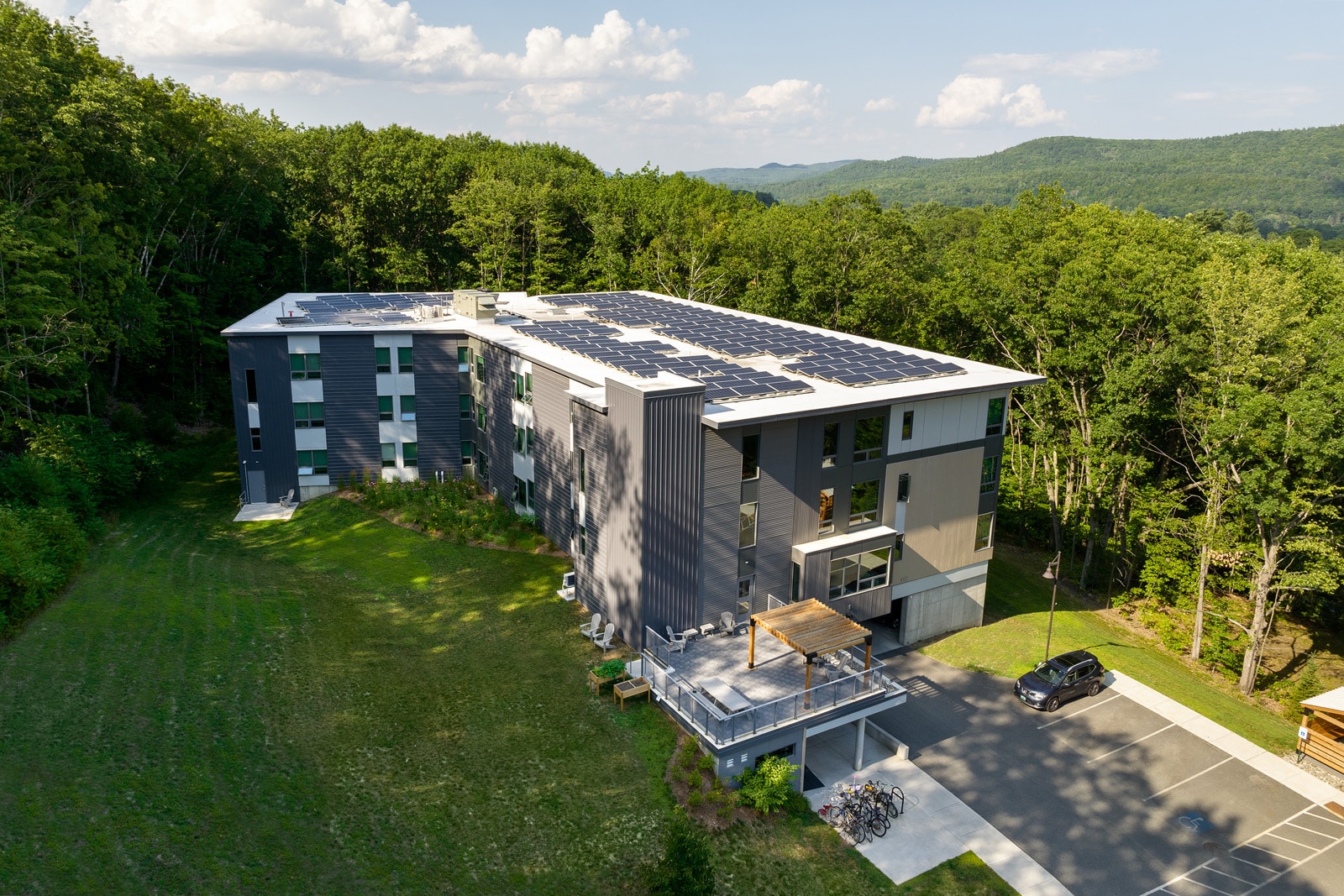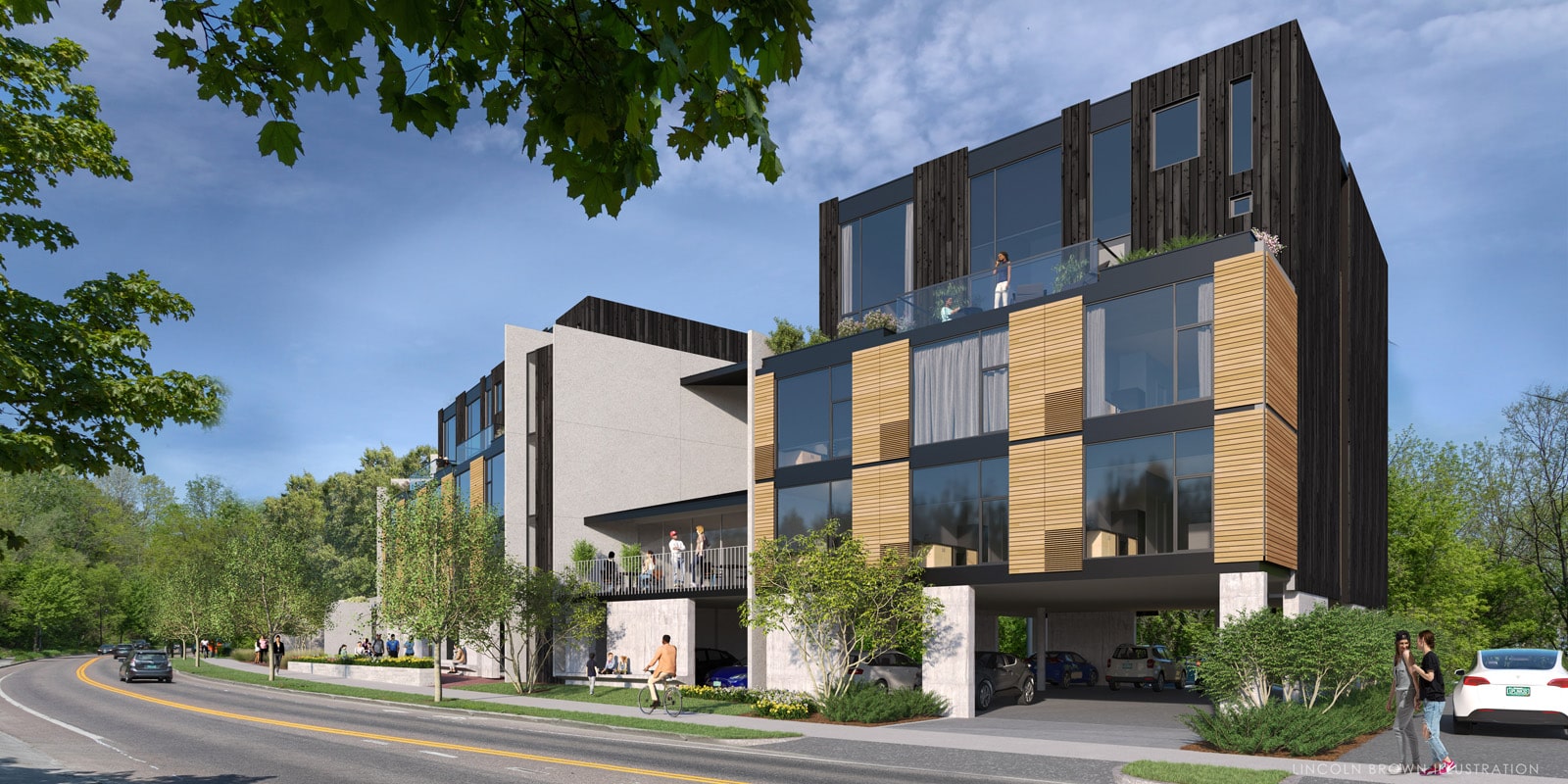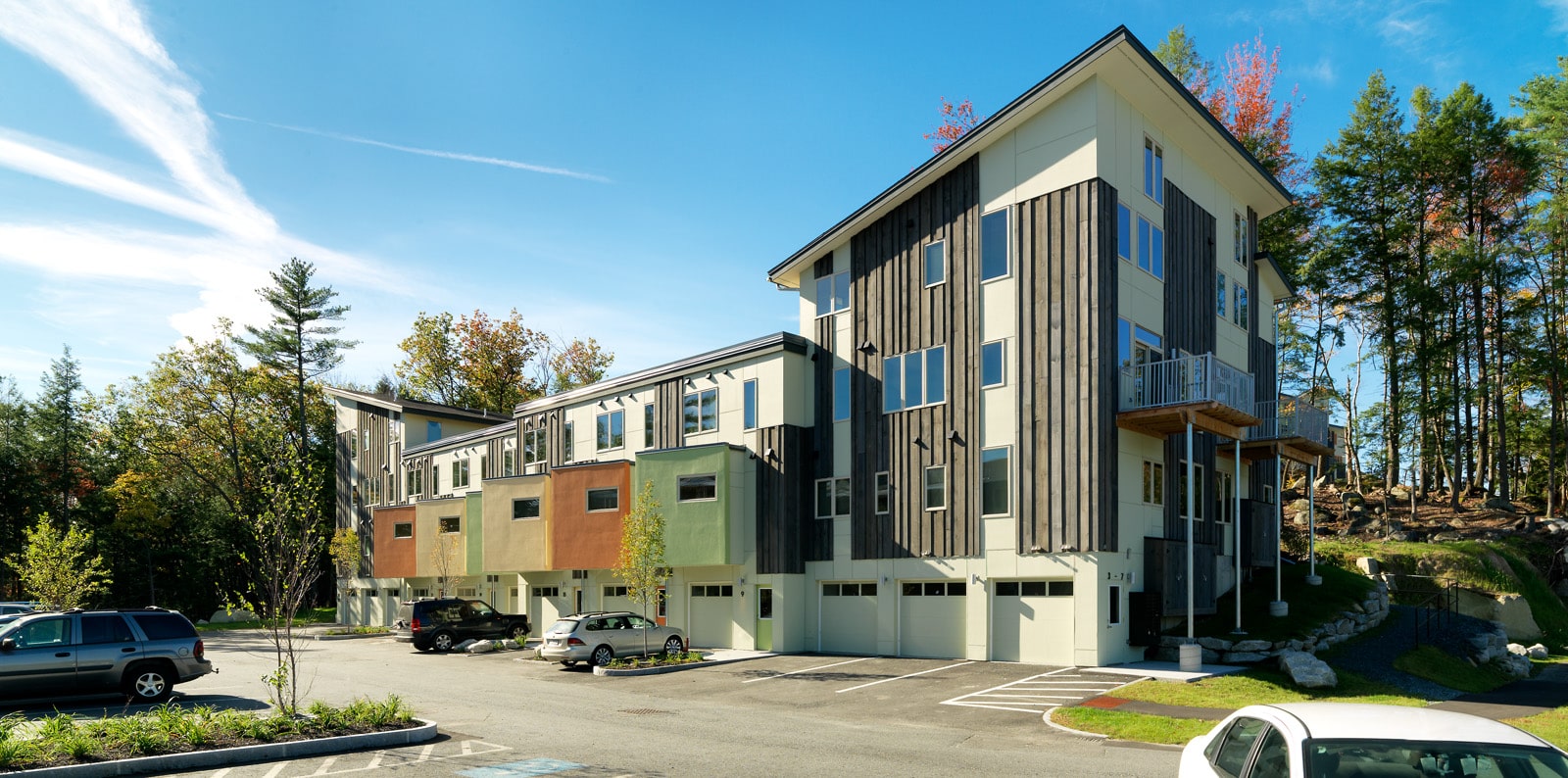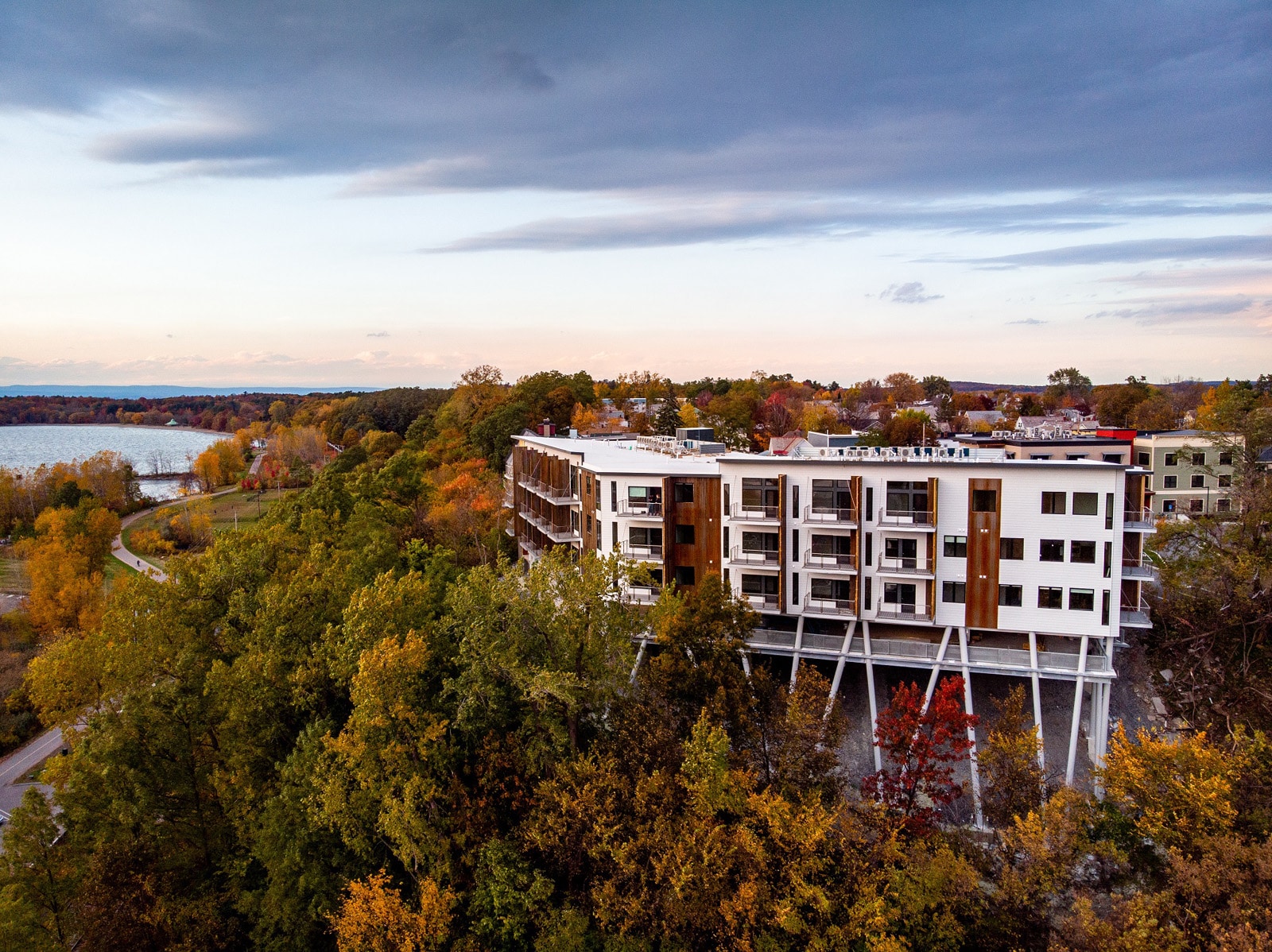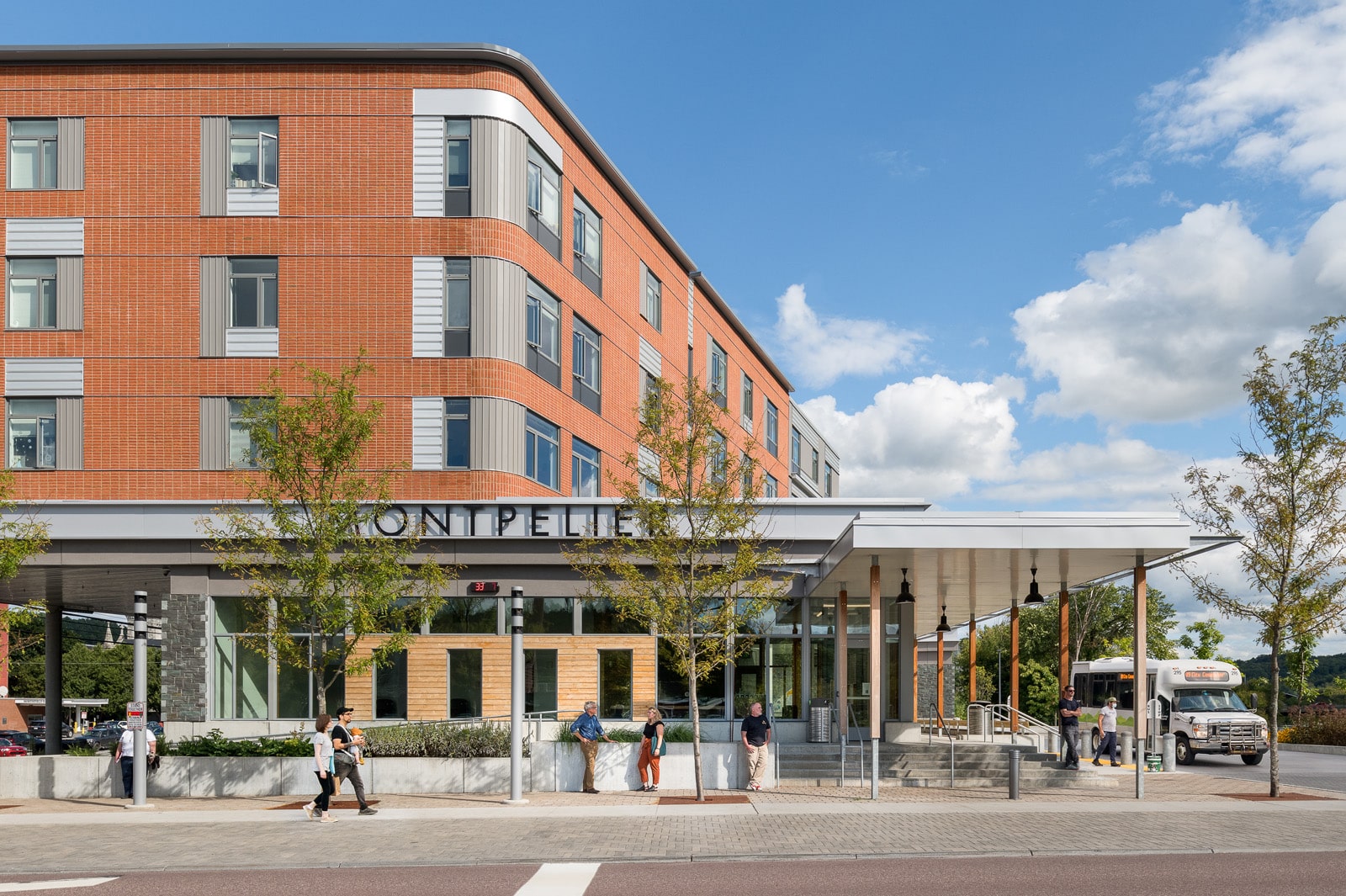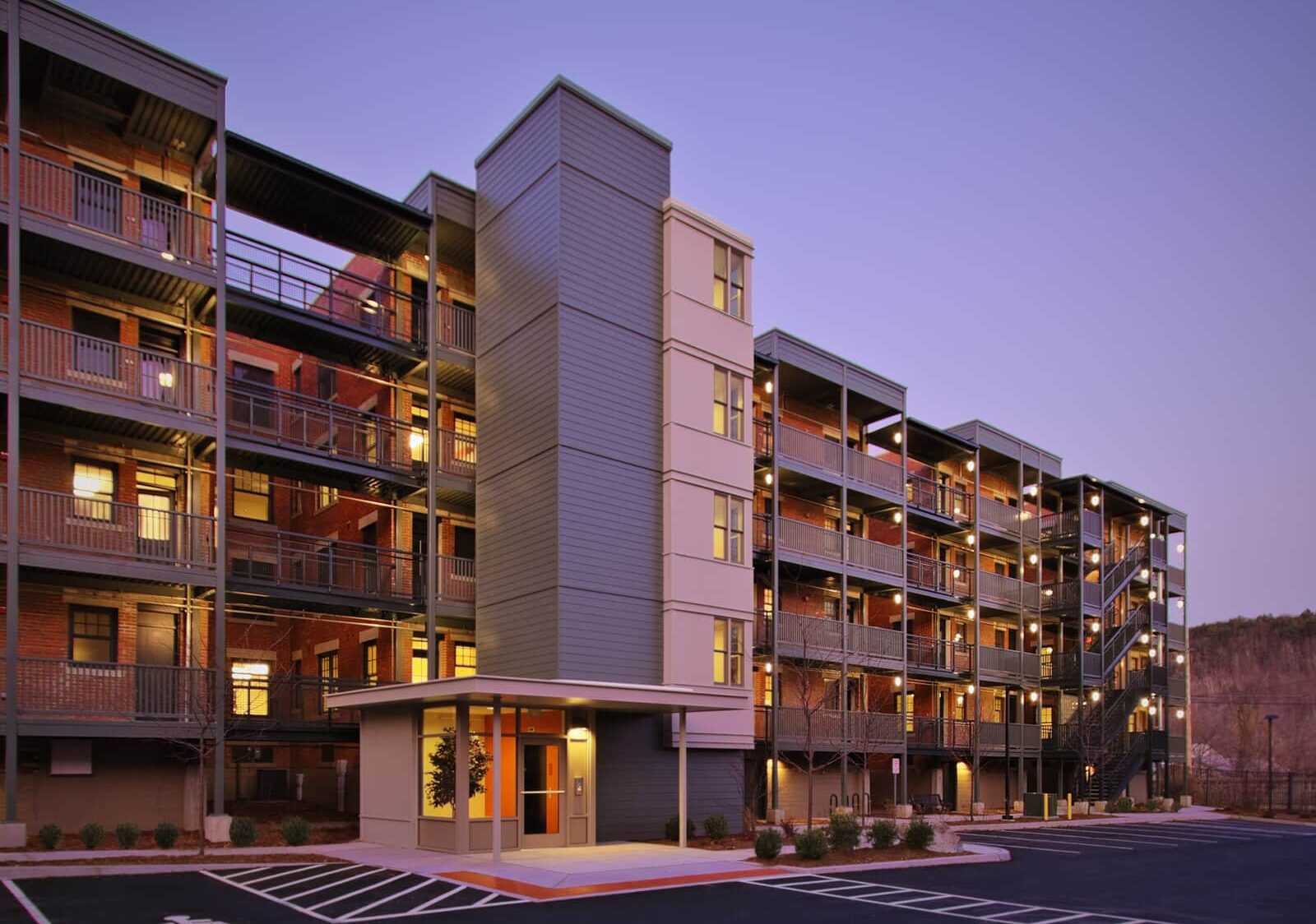
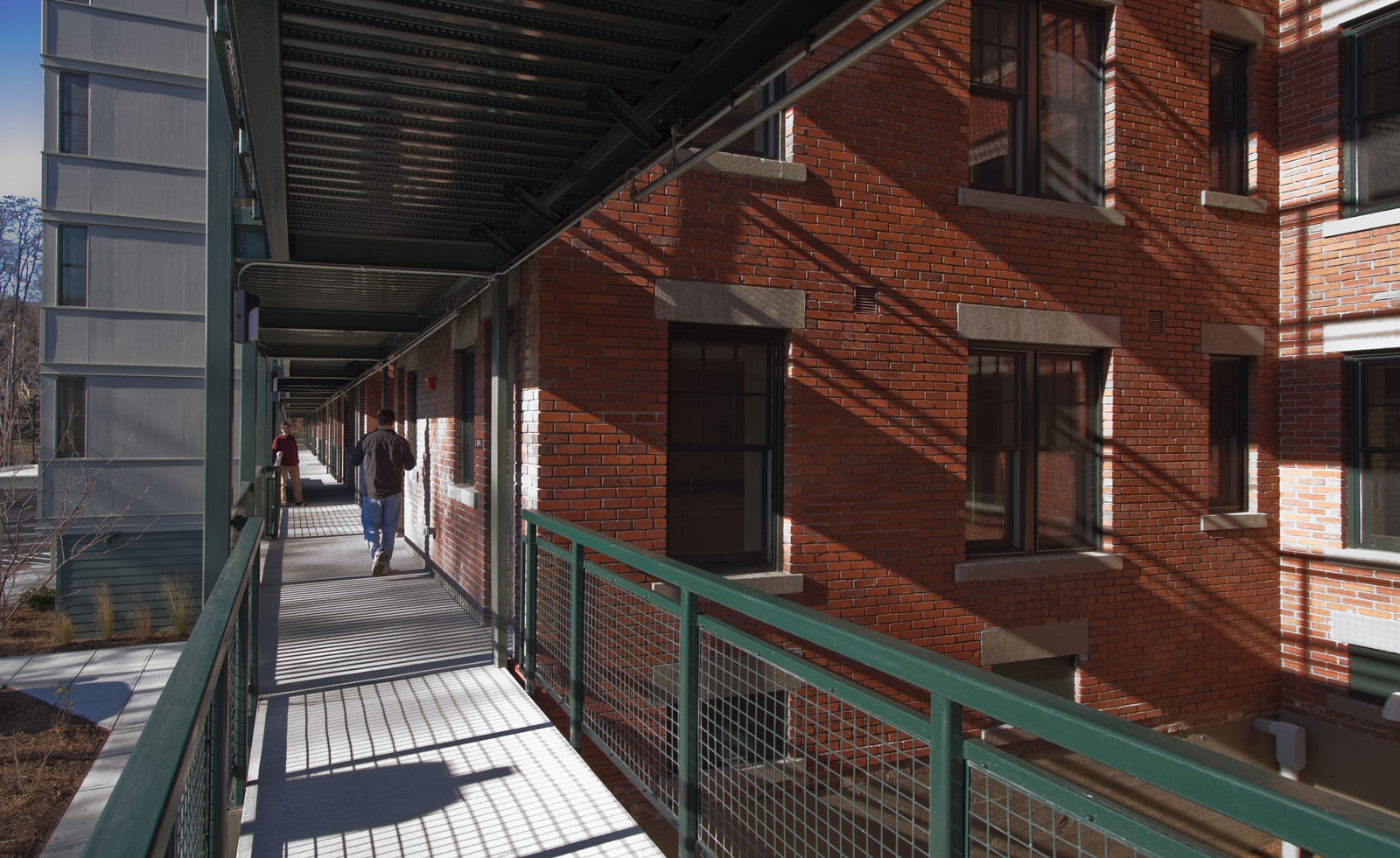
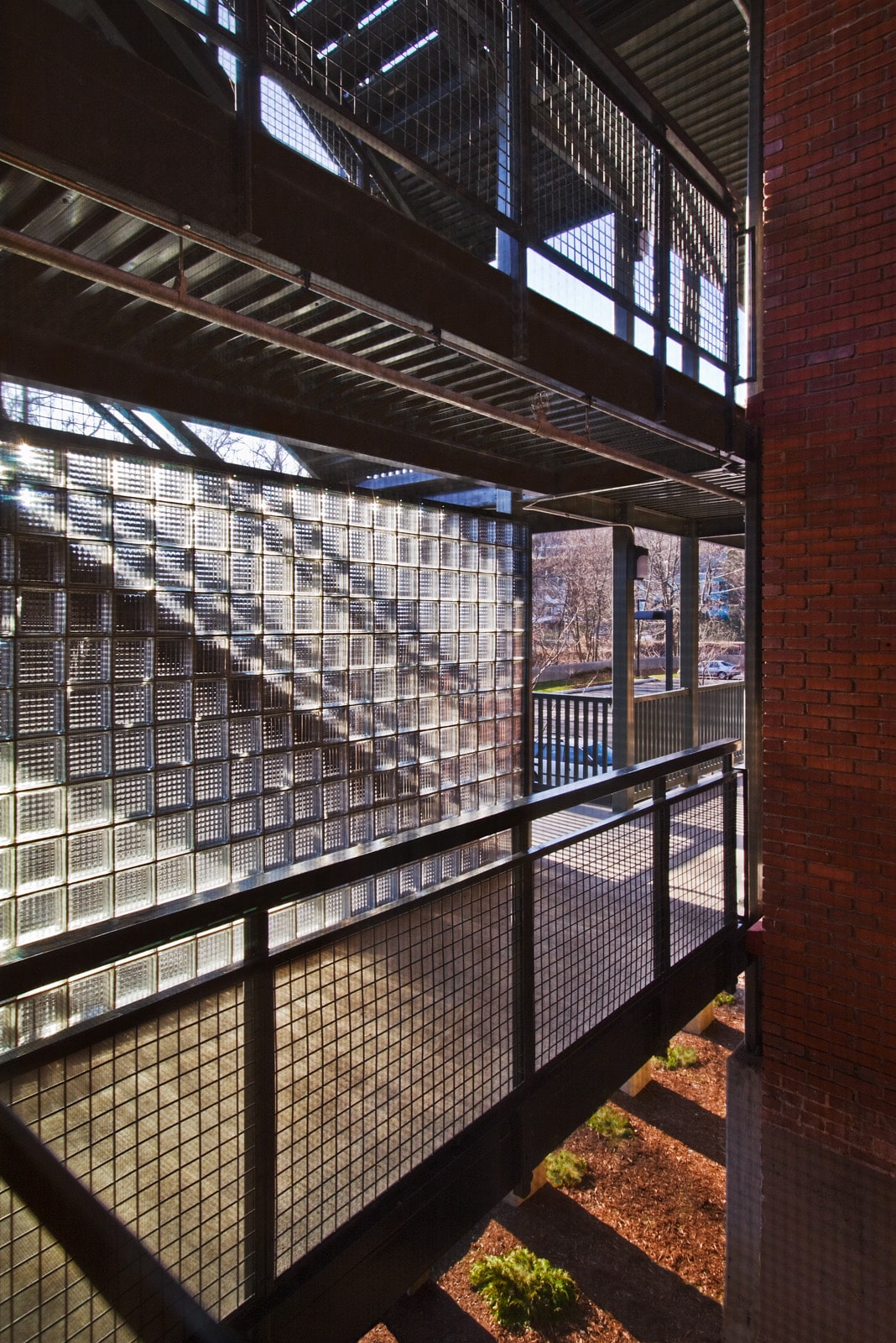
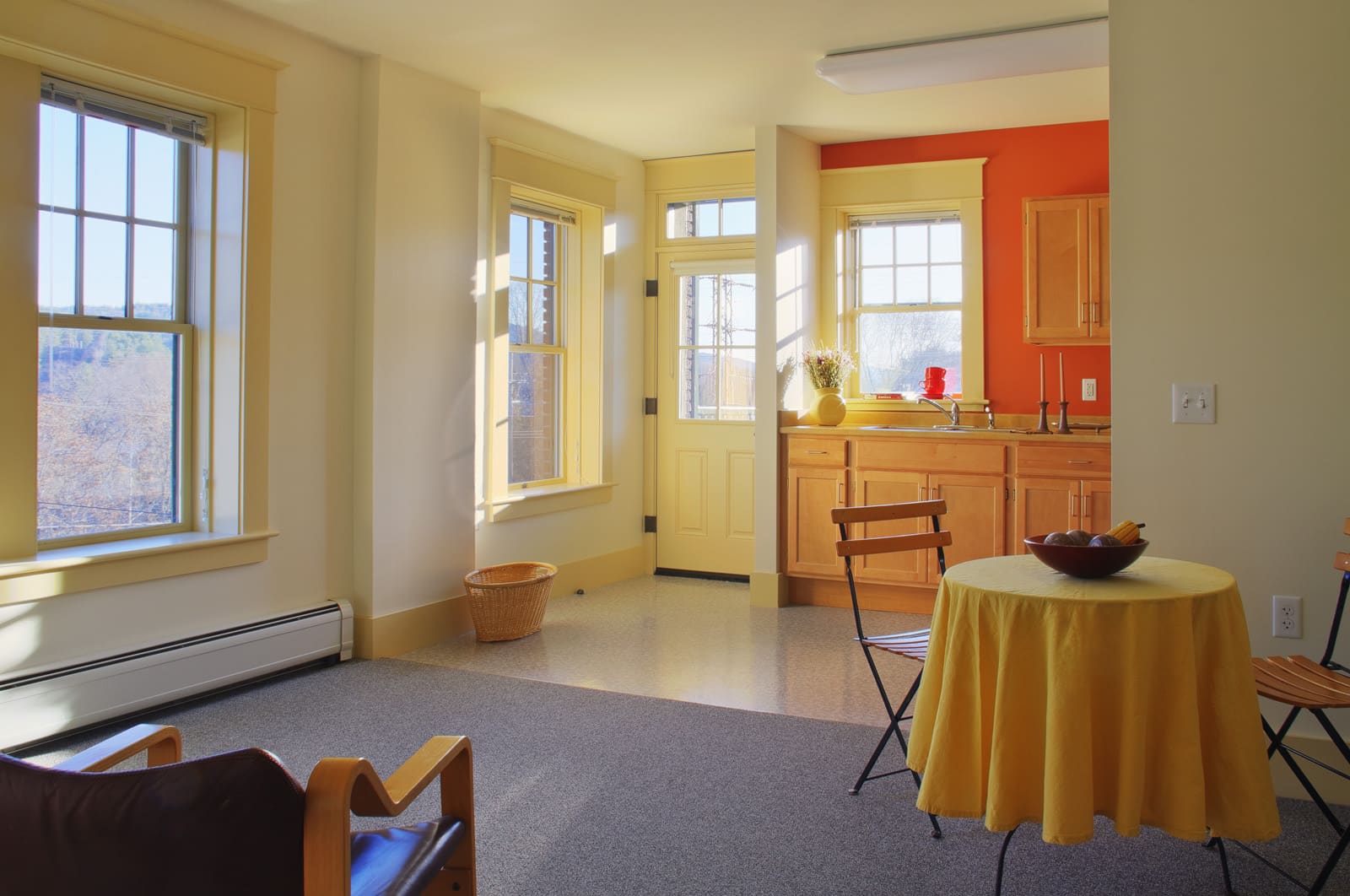
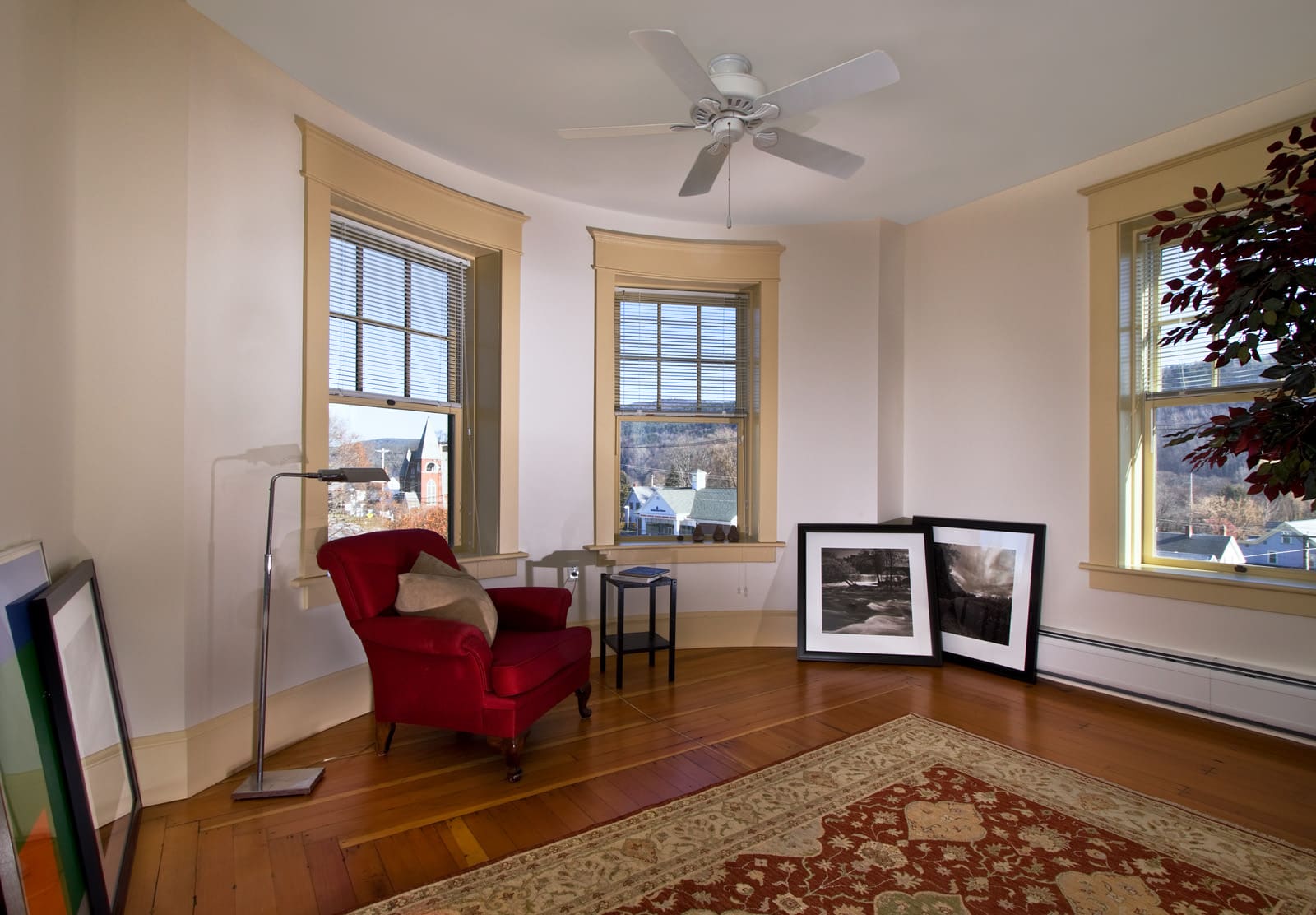
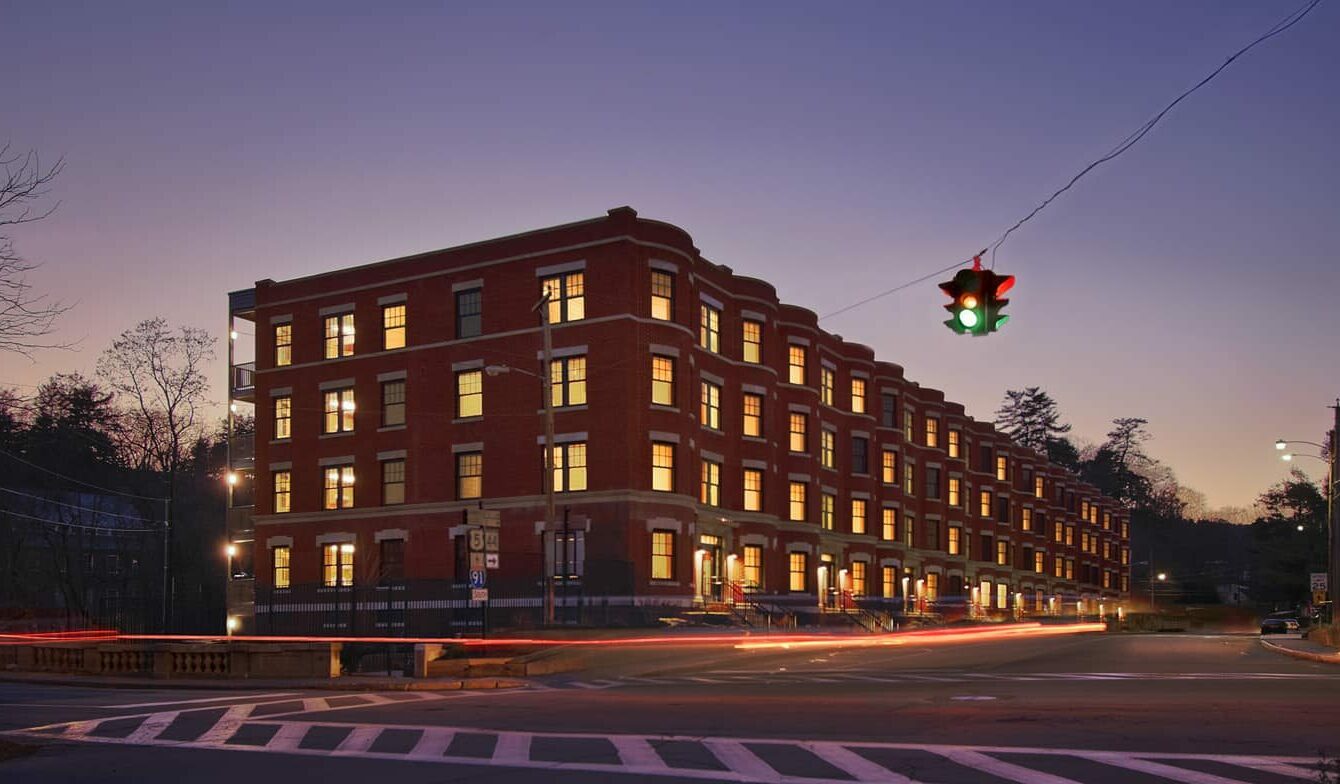
NAMCO Block
Windsor, VT
Size85,000 sf
Category Sustainability Features•Building re-use
Baseline: 50 kBtu/ft2/yr
Target: 27 kBtu/ft2/yr
AIA VT Excellence in Architecture Design – Honor Award
American Council of Engineering Companies “Grand Award” for Engineering Excellence (in association with Knight Consulting)
John M. Clancy Award for Socially Responsible Housing
Efficiency Vermont Design Award
Governor’s Award for Environmental Excellence
- E. F. Wall & Associates, General Contractor
Curt Albee, Clerk of the Works
- Energysmiths, Energy
- Dufresne & Associates, Civil
- Knight Consulting Engineers, Structural
- John F. Penney Consulting Services, Mechanical
- Pearson & Associates, Electrical
Mary Jo Llewellyn, Preservation
Gary Hall Photography
Renovation of a Historic Housing Complex
This project involved the rehabilitation of an 85,000 sf multi family housing project on the National Register of Historic Places in downtown Windsor, VT. The NAMCO Block was constructed in 1920 as worker housing for the nearby NAMCO manufacturing company. It is a four story brick apartment complex that was composed of 72 apartments in nine attached buildings on the Connecticut River. Over time, poor building management and increased crime led to plummeting public perception and the building became nearly uninhabitable.
The new owners envisioned a safe, healthy, mixed income “community within a community”. The renovations completely reconfigured the existing apartments – adding community space, creating secure entrances, adding an elevator and walkway system, and reducing the building’s density from 72 to 58. Massing and materials of the new construction (bridges, stairs, and elevator tower) acknowledge but do not copy the existing massing, texture, and detailing of the original buildings.
The design converted the apartments from low income to mixed income, restored the rich detailing of the exterior, reduced energy usage 60-70%, created two small pocket parks, and added a children’s play area.
“It’s tough to make an aesthetic project while engaging exceptional performance on a tight budget.” The jury felt the architects had done just that, while also “hitting all the bases” in terms of “historic preservation, ecology, and affordability."
– AIA Vermont Design Awards Jury